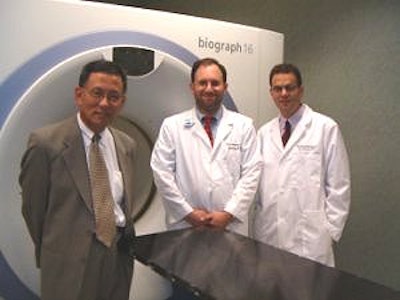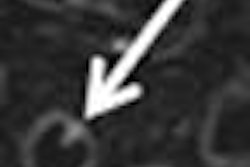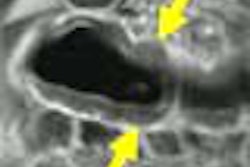
When a committee that includes your three biggest payors recommends against your installing a PET/CT scanner, do you go ahead anyway? The question is one of several raised in connection with events in upstate New York that some say are leading to an "arms race" in imaging.
The Windsong Radiology Group, headquartered in Williamsville, NY, near Buffalo, is facing a bigger-than-expected gamble with its $3 million facility improvement and lease of a new biograph 16-slice PET/CT scanner from Siemens Medical Solutions of Malvern, PA. That's because in May, Windsong’s installation plan was rejected by the Health Care Advisory Committee (HCAC) of the regional Niagara Health Quality Coalition.
The HCAC, which includes members from local businesses, insurance companies, community groups, and healthcare providers, was established last year to "augment the healthcare planning process" in the Niagara area by reviewing "selected issues such as new or expanded technology, new or expanded services, and capital expenditures."
As a practical matter, the HCAC focuses solely on big-ticket imaging equipment and makes recommendations for or against planned acquisitions. (The state of New York also has certificate-of-need (CON) laws that regulate imaging equipment acquisitions, but only for hospitals, not for freestanding centers or doctors' offices.)
 |
| Members of the Windsong Radiology Group with their newly leased PET/CT scanner, which was slated to go online this month. From left to right are John Sung, practice administrator, Dr. Stuart Rubin, and Dr. Eric Snitzer. Image courtesy of Windsong Radiology. |
The HCAC supports the availability of PET/CT scanning for the Niagara area. However, as noted in its written opinion, it wants to see area providers come together in a joint venture behind a mobile PET/CT unit that could serve the entire eight-county region.
"Putting it in one location means you could have a two-hour drive time," said Bruce Boissonnault, president of the Niagara Health Quality Coalition. "Conversely, having one every 30 miles doesn't make sense."
That two other entities have notified the HCAC about wanting to install PET/CT scanners despite the rejection of Windsong Radiology doesn't surprise Boissonnault. In fact, he said, "I think that's the point."
"Now, we're talking about having enough PET/CT capacity to handle almost all of Canada, located just here in this (U.S.) metropolitan area of Buffalo/Niagara, just because people are unwilling to work together," Boissonnault said. "And I think it's bad for care and bad for costs, because these providers are going to want to feed the machine."
Having already broken ground on its fixed PET/CT addition, Windsong Radiology opted to forge ahead without the committee's blessing. "It would be a monumental task to do a joint venture in the community," noted Dr. Eric Snitzer, one of two radiologists spearheading the group's acquisition.
Now the question is whether Windsong, which has been deemed the second largest private radiology facility in the country based on the number of patients visits, will be reimbursed for any PET/CT scans.
The HCAC's decisions are non-binding, but have generally held sway in nearby Rochester, NY, which has had a similar review committee for many years.
"Most of those things turn out to be followed to the letter by the insurance companies, with a few exceptions," Snitzer said.
Windsong is optimistic that trend won't hold in its case. It has worked out agreements for reimbursement from the area's three largest private payors -- even though all of those payors are represented on the HCAC by their medical directors.
"Introducing this new technology is challenging enough, and if we were handicapped by the loss of 80% of our entire referral base, we were going to be handicapped even further," Snitzer said. "We had a good enough relationship that we could sit down, listen to them, and have things ultimately look like they're going to turn out in our favor."
As to whether having a local committee issue "approvals" for imaging equipment is a good idea, the Windsong radiologists have mixed feelings.
"Instead of trying to control the self-referral patterns and quality of the studies, they've decided -- perhaps after complaints from employers about rising premium rates -- that they would try to control it from the other end," said Dr. Stuart Rubin. But the board could take up the anti-self-referral cause as part of its decision-making, he noted.
Others in the Niagara area have questioned whether having competing healthcare insurers make joint decisions in the HCAC represents an illegal antitrust activity. The U.S. Department of Justice is reportedly reviewing the issue, although the Rochester committee survived an earlier challenge on the same grounds.
Rochester and Buffalo/Niagara currently have the only community review committees of this kind. And Boissonnault said their efforts are raising awareness, even if it hasn't precluded the proliferation of PET/CT in this instance.
"We're going to just keep issuing our non-binding opinions and hope that sanity reigns in the public-policy dialogue," Boissonnault said. "But we really have no power to make sanity reign."
By Tracie L. ThompsonAuntMinnie.com staff writer
July 22, 2004
Related Reading
PET procedure volume to surge, July 21, 2004
New business models help cancer centers spend wisely, July 7, 2004
PET Medicare reimbursement -- narrow but widening, June 17, 2004
Practice needs determine slice configuration in PET/CT, June 3, 2004
Use of fused PET/CT images may improve radiation targeting for lung cancer, May 25, 2004
PET/CT improves noninvasive diagnosis of cardiovascular disease, May 5, 2004
Copyright © 2004 AuntMinnie.com



















